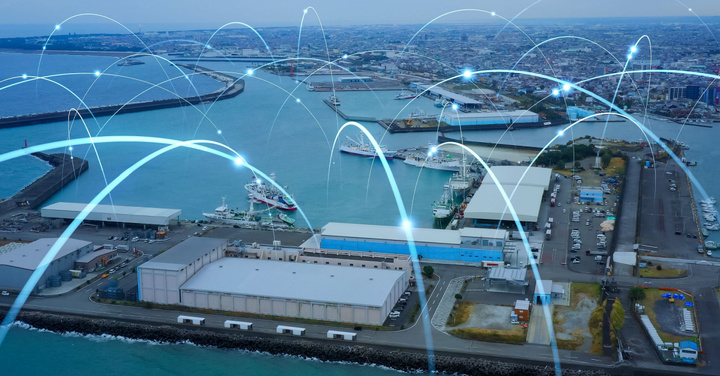
Logistics can sometimes feel so automatic that most people never stop to think about the intricate steps that are required to move containerized freight from the destination port along to the warehouse. Being able to coordinate and manage a supply chain starts with great communication among team members and their carrier partners to provide visibility over the freight, relay tracking updates of containers, and make sure that the drayage trucks arrive on time for pickup and delivery. This article will discuss the processes involved after a container arrives at a port, and the different modes of transportation that are available and required to get the load over to the customer’s warehouse.
Arriving at Port
Containerized freight encompasses the vast majority of the total volume shipped in the logistics industry. Global manufacturers located on the other side of the world use oceans to transport their cargo to major ports throughout the world. A good portion of container shipments end up in ports located on the coastlines of Canada and the United States. Of course, these ports also serve as gateways that connect North American exports to global markets. One 2017 estimate suggests that U.S. ports are responsible for more than $4.6 trillion worth of trade, or roughly 26% of the U.S. economy!
So what happens when a steamline arrives at port? After an ocean line stacked with containers journeys across the seas, there’s usually a period of time that a ship “dwells” before docking at the shipping terminal. A ship’s dwell time might be exacerbated by things like port congestion, equipment shortages, and increased consumer demand. This logistics industry experienced all of these problems when the global pandemic massively affected supply chains everywhere. After the ship docks at the terminal, the container will then be unloaded by large port cranes and placed onto the chassis of a drayage service.
Drayage
Drayage is another industry term that refers to the specific process of transporting goods short distances from an entry port or rail terminal. When shipping a container, it’s important that your carrier partners provide tracking options as it is crucial that the drayage carrier arrives on top at port to minimize delays and potential detention fees. Drayage companies differ in size and coverage. For example, there are local companies that might service only the port of Houston and within a short distance in Texas. Whereas, there are other national carriers that combine their own assets and owner operators, and provide coverage throughout the U.S. and Canada.
Transloading
A crucial step in moving containerized freight involves a process known as transloading. Transloading involves transferring a load from one type of equipment to another. For example, a machinery company in Singapore ships an order via container, however the receiver requires that the load be delivered using a flatbed. Transload services provide flexibility, and an area where companies can cross-dock, consolidate shipments, send full trailer loads (FTL), partial or less than truckload (LTL) shipments, and even warehouse products before being delivered to the warehouse. Transloading facilities are typically located near major sea ports, airports, and railyards to allow companies to quickly process their containers into the next step of the journey.
Intermodal
If you’ve ever stopped on a road due to a freight train, you’ve probably noticed the dozens of containers that are shipping intermodal. Intermodal shipping provides advantages to global shippers as it often reduces costs, carbon emissions, and is generally a safer way to transport freight. Intermodal means using more than one mode of transportation, usually through the combination of ocean, truck, and rail shipments. Since shipping intermodal requires additional steps to move your shipment, it’s important to work with a transportation provider that uses real-time container tracking. This not only provides the peace of mind to shippers when wondering where their freight is, but it helps operations teams coordinate with their carrier partners and streamline the shipping process.
Arriving at the Warehouse:
When a container finally arrives at a warehouse, the next step of course is to get it delivered and off the container. Depending on the commodity, weight, size, and freight class of the load, there’s usually a process involved in safely handling and unloading the container at the warehouses. Containers that are hauling stacked boxes that are cubed and floor loaded are usually just removed box by box and placed onto a pallet, which is then built and wrapped with plastic. Once the first few pallets are built, it is generally easier to unload a container as workers can either build the pallet directly inside the container right next to the product and have a forklift haul it away, or use a conveyor belt to quickly unload the truck. Either way, the process generally depends on the product involved, and the requirements needed to safely unload the container.
Conclusion
Port to warehouse does not need to be complicated, and when choosing a drayage service for your next containerized shipment, it’s best to rely on drayage experts like Port X Logistics. Port X Logistics offers all of their customers real-time tracking updates on all their container shipments, providing shippers with technology that helps streamline their supply chain. Their vast network of national carriers and asset-based options allows global shippers and freight forwarders to have steady capacity at all North American ports. Whether your company requires transloading, intermodal, or project management, Port X logistics has a team of specialists ready to assist you. Reach out to Port X Logistics today!